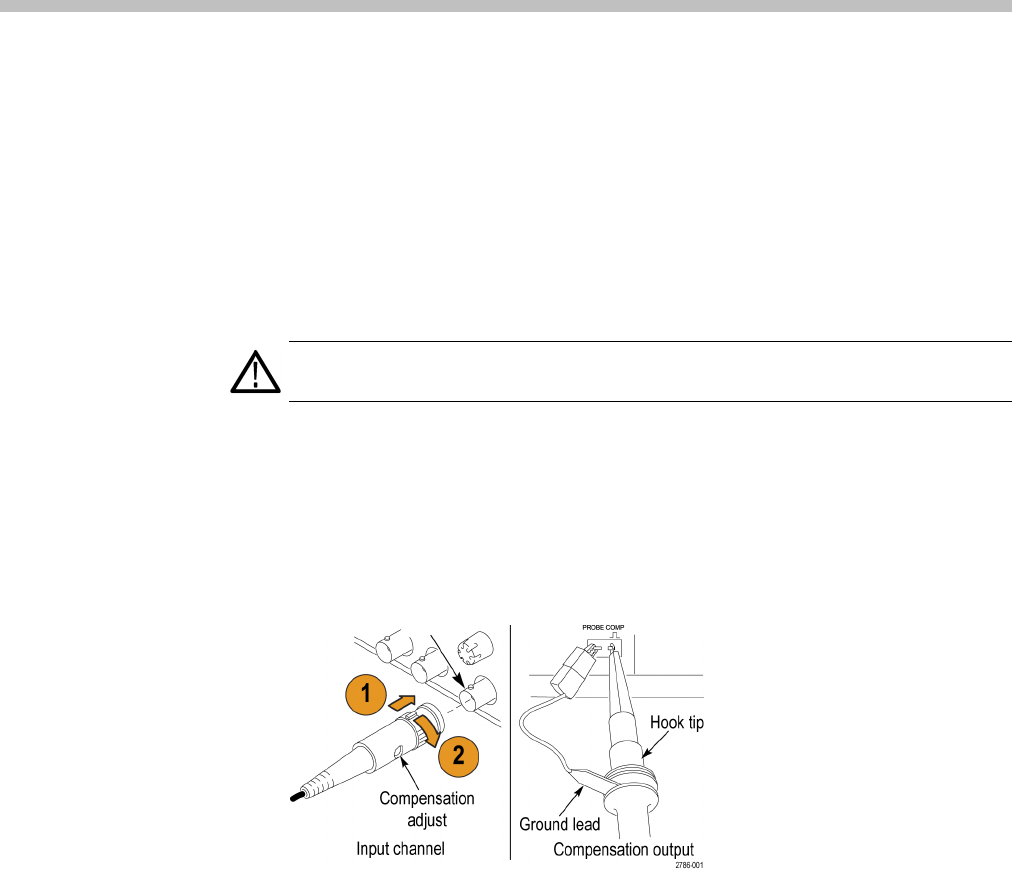User manual
Table Of Contents
- toc
- General safety summary
- Compliance Information
- Preface
- Getting Started
- Operating Basics
- Understanding Oscilloscope Functions
- Application Examples
- Taking Simple Measurements
- Using Autorange to Examine a Series of Test Points
- Taking Cursor Measurements
- Analyzing Signal Detail
- Capturing a Single-Shot Signal
- Measuring Propagation Delay
- Triggering on a Specific Pulse Width
- Triggering on a Video Signal
- Analyzing a Differential Communication Signal
- Viewing Impedance Changes in a Network
- Data Logging
- Limit Testing
- Math FFT
- USB Flash Drive and Device Ports
- USB Flash Drive Port
- File Management Conventions
- Saving and Recalling Files With a USB Flash Drive
- Using the Save Function of the Print Front Panel Button
- USB Device Port
- Installing the PC Communications Software on a PC
- Connecting to a PC
- Connecting to a GPIB System
- Command Entry
- Connecting to a Printer
- Printing a Screen Image
- Reference
- Appendix A: Specifications
- Appendix B: TPP0101 and TPP0201 Series 10X Passive Probes Inform
- Appendix C: Accessories
- Appendix D: Cleaning
- Appendix E: Default Setup
- Appendix F: Font Licenses

Appendix B: TPP0101 and TPP0201 Series 10X Passive
Probes Information
The TPP0101 & TPP0201 Series 10X Passive Probes are high impedance,
passive probes with 10X attenuation. They are designed for use with TBS1000
oscilloscopes. These oscilloscopes have 20 p F of input capacitance.
The compensation range of these probes is 15 – 25 pF.
The p robes have no user- or Tektronix-serviceable parts.
WARNING. Do not float the TPP0101 and TPP0201 probes on any oscilloscope.
Connecting the Probe to the Oscilloscope
Connect the probe as shown in the illustrations below.
Compensating the Probe
Due to variations in oscilloscope input characteristics, the low-frequency
compensation of the probe may need adjustment after moving the probe from
one oscilloscope channel to another.
If a 1 kHz calibrated square wave displayed at 1 ms/division shows significant
differences between the leading and trailing edges, perform the following steps to
optimize low-frequency compensation:
TBS1000 Series Oscilloscopes User Manual 115










